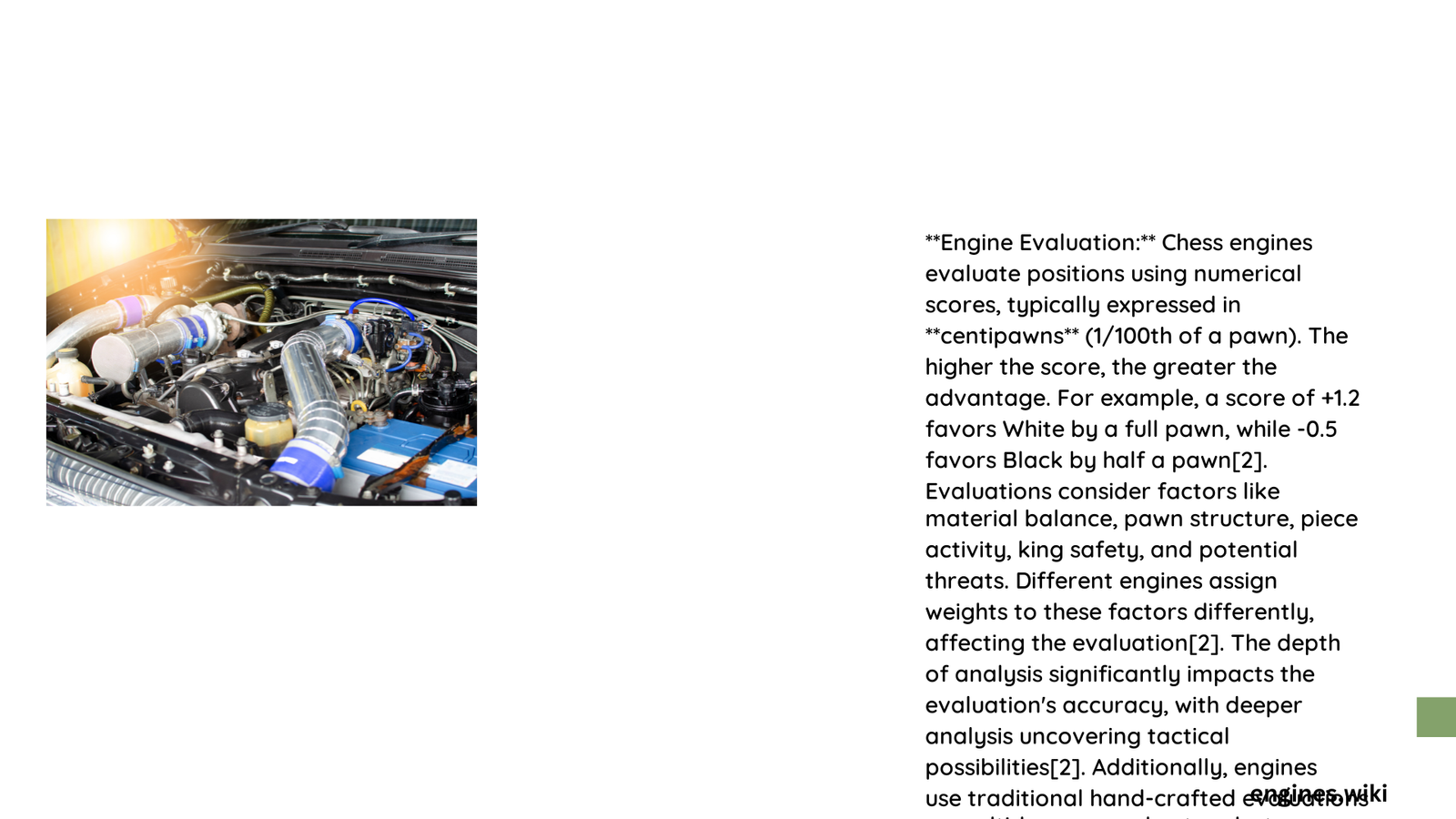Engine evaluation is a critical process that involves systematic assessment of an engine’s performance, efficiency, and operational characteristics through advanced diagnostic techniques, precision measurement tools, and comprehensive analytical methodologies. This intricate process enables engineers and technicians to understand an engine’s capabilities, identify potential improvements, and ensure optimal functionality across various operating conditions.
What Are the Core Performance Metrics in Engine Evaluation?
Performance Measurement Fundamentals
Engine evaluation encompasses multiple critical dimensions of assessment:
Quantitative Performance Indicators
- Horsepower Output
- Measures maximum power generation capacity
- Typically ranges between 100-500 hp for standard vehicles
-
Directly correlates with acceleration and overall vehicle performance
-
Torque Characteristics
- Indicates rotational force generation
- Critical for understanding engine’s pulling power
- Measured in pound-feet (lb-ft) or Newton-meters (Nm)
| Performance Metric | Typical Range | Significance |
|---|---|---|
| Horsepower | 100-500 hp | Overall Power Output |
| Torque | 100-400 lb-ft | Pulling Power |
| Fuel Efficiency | 20-40 MPG | Economic Performance |
What Diagnostic Tools Enable Precise Engine Evaluation?
Advanced Measurement Instruments
- Pressure Sensors
- Measure in-cylinder combustion pressures
- Accuracy within ±1-2% of actual reading
-
Provide insights into combustion efficiency
-
Temperature Monitoring Devices
- Track coolant and exhaust temperatures
- Help identify potential thermal stress points
-
Critical for preventing overheating
-
Emissions Analysis Probes
- Measure CO, NOx, HC levels
- Ensure compliance with environmental regulations
- Provide detailed combustion quality assessment
How Do Environmental Factors Impact Engine Performance?
Critical External Influences
Environmental conditions significantly affect engine evaluation:
- Temperature Variations
- High temperatures reduce engine efficiency
- Can decrease power output by 5-10%
-
Impacts fuel combustion characteristics
-
Altitude Considerations
- Reduced air density affects oxygen intake
- Potentially decreases engine performance by 3-7%
- Requires compensatory fuel-air mixture adjustments
What Challenges Emerge During Comprehensive Engine Evaluation?
Technical Complexity Factors
- Data Collection Limitations
- Requires multiple test cycles
- Need for controlled experimental environments
-
Complex instrumentation setup
-
Technological Variability
- Different engine designs require unique evaluation approaches
- No universal diagnostic protocol exists
- Constant technological evolution demands adaptive methodologies
Emerging Trends in Engine Evaluation Techniques
Future-Focused Approaches
- Artificial Intelligence Integration
- Machine learning algorithms for predictive analysis
- Real-time performance optimization
-
Enhanced diagnostic accuracy
-
Advanced Sensor Technologies
- Miniaturized, high-precision measurement devices
- Wireless data transmission capabilities
- Reduced installation complexity
Conclusion

Engine evaluation represents a sophisticated intersection of engineering precision, technological innovation, and analytical expertise. By leveraging advanced diagnostic tools, understanding performance metrics, and acknowledging environmental influences, professionals can unlock deeper insights into engine functionality and potential improvements.
